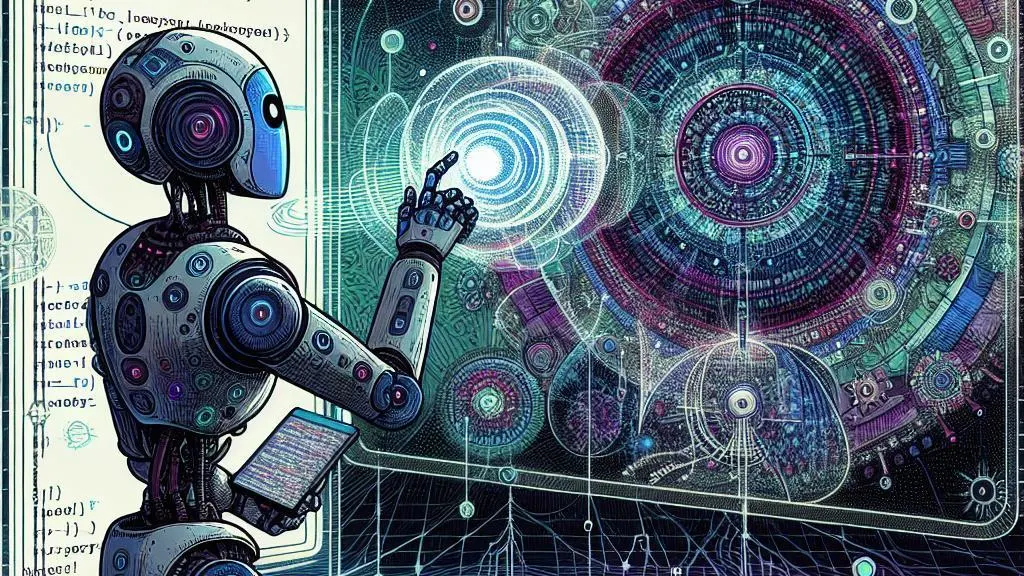What is LLM in AI?
Peel back your eyelids and join us as we venture into the awe-inspiring world of …

Image-to-code AI builders are revolutionising the way we think about software development. These cutting-edge tools use machine learning algorithms to convert visual designs and mockups into functional code, drastically reducing the time and effort required to bring ideas to life.
As someone who has always been fascinated by AI's potential to transform industries, I couldn't help but dive deeper into this exciting new technology.

At their core, image-to-code AI builders are sophisticated machine learning models trained on vast visual design datasets and their corresponding code. These models learn to generate code that accurately reflects the design intent by analysing patterns and relationships between visual elements and code structures.
Several types of image-to-code AI builders are tailored to specific use cases. Some focus on converting wireframes and mockups into HTML and CSS code for web development, while others specialise in generating mobile app layouts or even entire applications from visual designs. The possibilities are truly endless.
Building an image-to-code AI builder is no small feat. It requires a deep understanding of machine learning and expertise in the specific programming languages and frameworks for which the model will generate code.
The first step in the creation process is data collection. To train an image-to-code AI builder, it would be best to have a large dataset of visual designs and their corresponding code. This data must be carefully curated and labelled to ensure the model learns the right associations between visual elements and code structures.
Once the data is collected, it must be preprocessed and cleaned to remove any noise or inconsistencies. This is a crucial step, as the quality of the training data directly impacts the model's performance.
With the data prepared, the next step is to train the machine learning model. This involves feeding the data into the model and adjusting its parameters until it can accurately generate code from visual designs. The training process can take days or even weeks, depending on the size and complexity of the dataset.
Finally, once the model is trained, it must be deployed and integrated into a user-friendly interface. This allows designers and developers to input their visual designs easily and receive generated code in return.
While the potential of image-to-code AI builders is undeniable, building one from scratch requires significant time and resources. To create a high-quality model, you need a deep understanding of machine learning concepts and proficiency in programming languages like Python and TensorFlow.
Additionally, building an image-to-code AI builder requires access to large datasets of visual designs and code. These datasets can be difficult and expensive, especially for individuals or small teams.
However, the good news is that you don't necessarily need extensive technical knowledge to build an image-to-code AI builder. Thanks to the rise of no-code tools, even those with limited programming experience can create powerful AI models.

No-code tools are revolutionising the way we build AI models. These user-friendly platforms allow anyone to create sophisticated machine-learning models without writing a single line of code.
One popular no-code tool for building image-to-code AI builders is Obviously.AI. This drag-and-drop platform allows users to easily upload their visual designs and generate code with just a few clicks. AI uses pre-trained models and transfers learning to achieve high-quality results without extensive training data. Another one to stay on the lookout for is Playfix.io (which I'm part of the team)
Another powerful no-code tool is Akkio, which offers a variety of pre-built models for image-to-code conversion. With Akkio, users can select the type of code they want to generate (e.g., HTML, CSS, Swift) and upload their visual designs. The platform then generates clean, functional code in seconds.
Of course, no-code tools have their limitations. They may not offer the same level of customisation and fine-tuning as building a model from scratch. However, for many use cases, no-code tools provide a fast and accessible way to harness the power of image-to-code AI builders.
Image-to-code AI builders are poised to change the way we approach software development. By automating the process of converting visual designs into functional code, these tools have the potential to dramatically accelerate the development lifecycle and lower the barrier to entry for creating software.
While building an image-to-code AI builder from scratch requires significant technical expertise and resources, the rise of no-code tools has made this technology accessible to a wider audience. With platforms like Obviously.AI and Playfix, anyone can harness the power of AI to bring their visual ideas to life.
As image-to-code AI builders continue to evolve and mature, I believe we will see a fundamental shift in our thinking about software development. The ability to generate functional code from visual designs will open up new possibilities for rapid prototyping, iterative design, and cross-functional collaboration.
Of course, image-to-code AI builders are still in their early stages, and much work remains to refine and improve these models. But I am excited to see where this technology will take us in the coming years.
I encourage you to explore the possibilities of image-to-code AI builders for yourselves. Whether you are a seasoned developer looking to streamline your workflow or a novice designer hoping to bring your ideas to life, these tools can transform your work.
Is anyone else a fan of using image-to-code AI builders? I'd love to hear about your experiences and insights in the comments below. Let's start a conversation about the future of software development!
Some other posts you may like